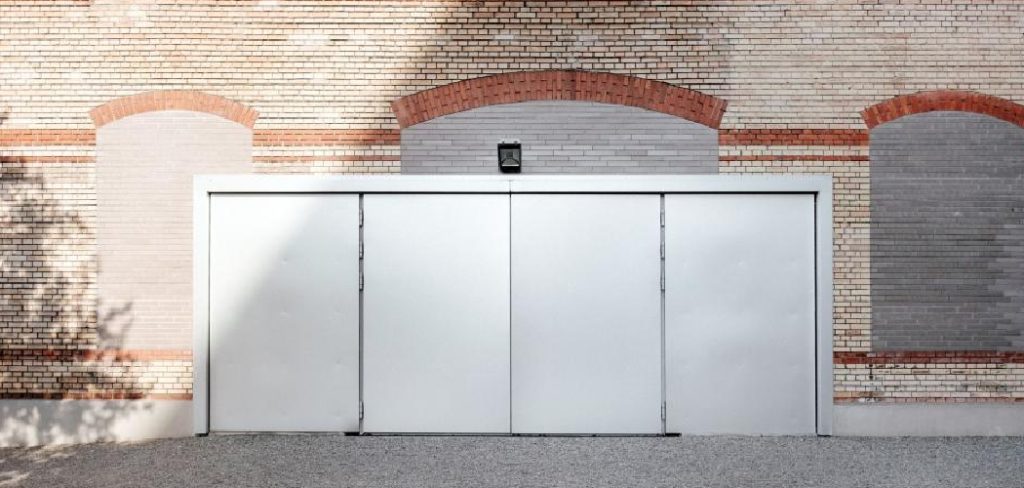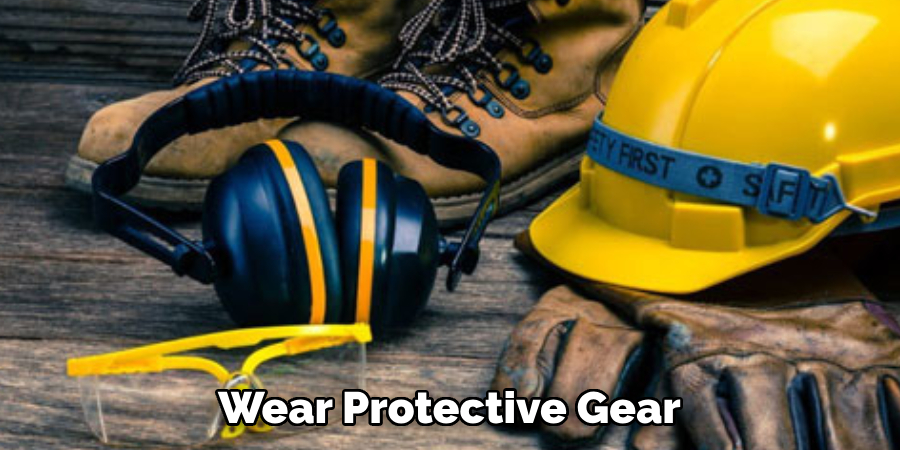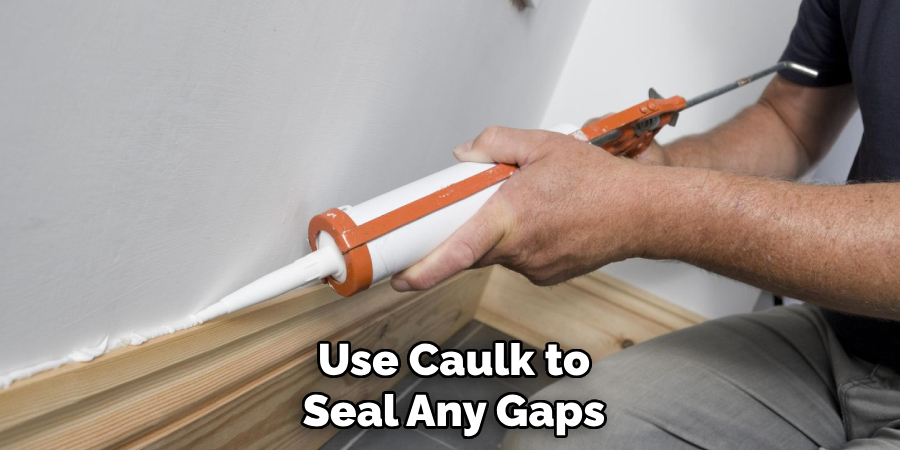Insulating a garage wall is an effective way to improve energy efficiency, increase comfort, and make the space more usable throughout the year. Whether you use your garage for parking, storage, or as a workshop, proper insulation can help maintain a consistent temperature, reduce noise, and protect items from extreme weather conditions.

In this guide on how to insulate a garage wall, we will explore the various materials and methods available for insulating garage walls, as well as offer tips for achieving the best results. With the right approach, you can transform your garage into a more functional and energy-efficient part of your home.
Needed Tools and Materials
Tools
Measuring Tape
A measuring tape is an essential tool for any home improvement project, including insulating a garage wall. Measure your wall dimensions accurately to ensure you purchase the correct amount of insulation and materials.
Utility Knife
A utility knife is useful for cutting materials such as insulation or plastic sheeting to fit specific areas on your garage wall. Make sure you have a sharp blade for clean cuts.
Staple Gun
A staple gun will be necessary if you are using batts or blankets as your chosen insulation material. It can also come in handy for securing plastic sheeting or other coverings over the insulation.
Caulk Gun
A caulking gun is needed if you plan on sealing any air leaks or gaps around windows, doors, or other openings in your garage wall.
Safety Gear
Insulation materials can be irritating to the skin and respiratory system. It is essential to wear protective gear such as gloves, long-sleeved shirts, pants, safety glasses, and a dust mask while handling insulation.
Materials
Insulation
There are various types of insulation available for garage walls, including fiberglass batts or blankets, foam board panels, or blown-in cellulose or fiberglass. Choose the best option based on your budget and desired level of insulation.
Plastic Sheeting
A layer of plastic sheeting can serve as a vapor barrier between the insulation and the exterior wall. It is especially useful if you live in a colder climate and want to prevent moisture from entering your garage.
Weather Stripping
Weather stripping can help seal any gaps around windows or doors, preventing drafts and improving energy efficiency.
Caulk
Caulk can also be used to seal air leaks around windows, doors, or other openings on the garage wall.

9 Simple Methods on How to Insulate a Garage Wall
Method 1: Insulating with Fiberglass Batts or Blankets
- Measure the wall dimensions accurately to determine how much insulation you will need.
- Cut the batts or blankets to fit snugly between the wall studs.
- Place the insulation in between the studs, making sure there are no gaps or spaces.
- Use a staple gun to secure the insulation in place by stapling it to the stud edges.
- Repeat this process until all areas of your garage wall are insulated.
Method 2: Insulating with Foam Board Panels
- Measure and cut the foam board panels to fit snugly between the wall studs.
- Apply adhesive to one side of each panel and press them firmly against the interior garage wall.
- Use screws or nails to secure the panels in place for added support.
- Seal any gaps or spaces between panels using caulk or expanding foam.
Method 3: Insulating with Blown-In Cellulose or Fiberglass
- Rent a blowing machine and purchase the appropriate amount of blown-in insulation for your garage wall dimensions.
- Wear protective gear, and carefully follow the manufacturer’s instructions when handling and installing blown-in insulation.
- Use a hose to distribute the insulation evenly between the wall studs, starting from the bottom and working your way up.
- Use a rake or broom to spread out the insulation and ensure it fills all areas between the studs.
Method 4: Combining Different Types of Insulation
- If you have an existing layer of fiberglass batts or blankets, you can add an extra layer of insulation by installing foam board panels over them.
- This method will provide added insulation and help prevent any gaps or spaces between the existing insulation.
Method 5: Adding a Layer of Plastic Sheeting
- Install plastic sheeting over the insulated garage wall to serve as a vapor barrier.
- Cut the sheeting to fit snugly against the wall and staple it in place with a staple gun.
- Overlap seams by at least six inches and seal them with tape to create an airtight barrier.
Method 6: Sealing Air Leaks with Caulk
- Use caulk to seal any gaps or cracks around windows, doors, or other openings on the garage wall.
- Apply caulk in a continuous bead along the gap and smooth it out with your finger or a caulk tool.
- This method will prevent cold air from entering and reduce energy loss.

Method 7: Installing Weather Stripping
- Measure and cut weather stripping to fit around windows and doors on your garage wall.
- Apply adhesive to one side of the weather stripping and press it firmly against the edge of the window or door frame.
- Repeat this process for all windows and doors to create an airtight seal.
Method 8: Insulating an Unfinished Garage Wall
- If your garage wall is unfinished, consider adding a layer of foam board insulation before installing drywall.
- This will provide added insulation and prevent any drafts or moisture from entering the garage.
Method 9: Hiring a Professional
- If you are unsure about how to properly insulate your garage wall or do not have the necessary tools and materials, it may be best to hire a professional.
- A contractor can assess your specific needs and provide expert installation for optimal results.
- This option may be more expensive, but it will ensure that your garage wall is properly insulated and improve energy efficiency in the long run.
Following these simple methods on how to insulate a garage wall will help you properly insulate your garage wall and create a more comfortable and energy-efficient space. Remember to wear protective gear, carefully measure and cut materials, and seal any gaps or spaces for the best results. So, start your project today and enjoy a well-insulated garage all year round! Happy DIYing!

How Long Does Garage Insulation Last?
The longevity of garage insulation largely depends on the type of insulation material used and the environmental conditions to which it is exposed. Fiberglass insulation, one of the most common types, can last 20 to 30 years or longer if it remains dry and undisturbed. Foam board insulation, known for its durability, can also maintain its effectiveness for decades. However, the lifespan of blown-in insulation such as cellulose may be less, usually around 15 years, as it might settle or degrade over time.
Proper installation and maintenance, including ensuring the materials remain dry and free from pests, will significantly enhance the longevity of the insulation. Regular inspections of the insulation can help identify any issues early, allowing for repairs or replacements and ensuring consistent energy efficiency in your garage.
Additional Tips
- Before beginning any insulation project, make sure you have all the necessary tools and materials on hand.
- Wear protective gear such as gloves, long-sleeved shirts, pants, safety glasses, and a dust mask when handling insulation.
- Consider the climate and your budget when choosing which type of insulation to use for your garage wall.
- Properly insulating your garage can also help reduce noise from outside sources, such as traffic.
- Regularly check and maintain your insulation to ensure it is still functioning effectively.
- Insulating your garage wall can not only improve energy efficiency but also add value to your home.
- Consult with a professional if you have any concerns or questions about the insulation process.
Frequently Asked Questions
Q: How Do I Know if My Garage Wall Needs Insulation?
A: If your garage feels colder than the rest of your house, or if you notice drafts or a significant increase in energy bills, it may be time to insulate your garage wall.
Q: What Type of Insulation is Best for My Garage Wall?
A: The best type of insulation for your garage wall will depend on factors such as climate, budget, and personal preference. Fiberglass batts or blankets, foam board panels, and blown-in cellulose or fiberglass are all effective options.
Q: Can I Install Insulation Myself?
A: Yes, you can install insulation yourself if you have the necessary tools and materials. However, it may be best to hire a professional contractor for optimal results if you are unsure or do not have experience with insulation installation.

Conclusion
Insulating your garage wall is an essential step in creating a comfortable and energy-efficient space. With the right tools, materials, and methods on how to insulate a garage wall, you can complete this project on your own and enjoy the benefits for years to come.
Remember to regularly inspect and maintain your insulation for consistent results, and consult with a professional if needed. So, what are you waiting for? Start insulating your garage wall today and reap the rewards of a well-insulated space! Happy DIYing!
